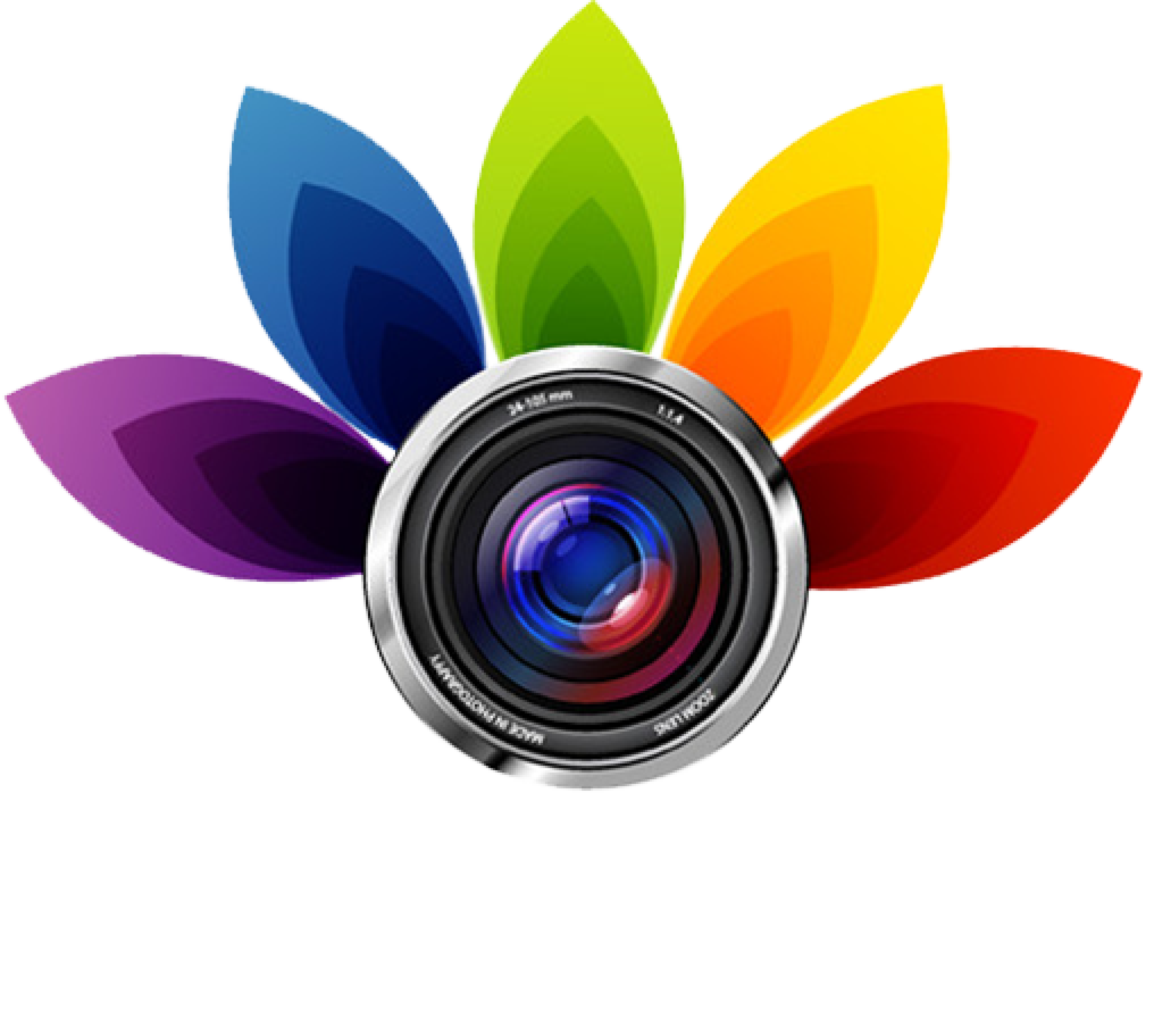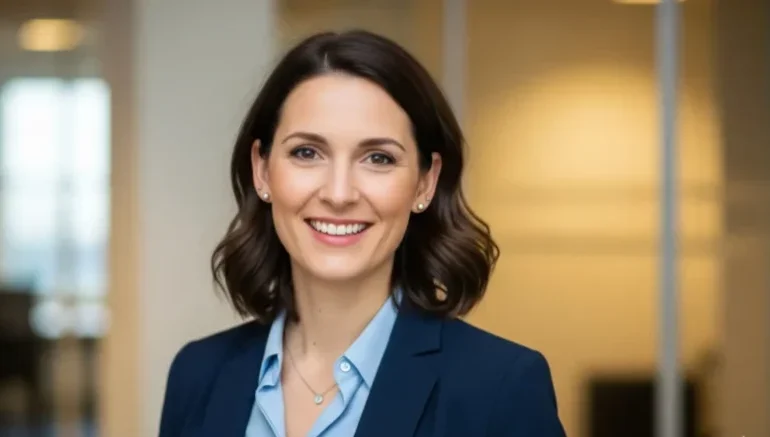
6 Headshot Tips That Can Quickly Make a Big Difference
A great headshot can quickly make a big difference by showing personality, confidence, and professionalism while staying natural. Good lighting is key, as it evens out skin tones and avoids harsh shadows. Proper setup also matters, with the face centered and eyes sharp in focus. The expression, if it is serious or friendly, should always feel genuine and not forced.
The background can quickly improve your results when following headshot tips, keeping the focus on the person. A simple or slightly blurred background works best. Editing should improve the photo without making it look fake, keeping skin tones and colors natural. When these elements come together, your headshot becomes memorable and professional.
Fundamental Headshot Tips
 A professional headshot is more than just a simple photo of someone’s face. It represents personality, confidence, and professionalism. If it is for a corporate profile, an actor’s portfolio, or social media, a well-taken headshot helps create a strong impression. Many people think a good camera is all that matters, but in reality, everything from lighting to composition and editing plays a big role.
A professional headshot is more than just a simple photo of someone’s face. It represents personality, confidence, and professionalism. If it is for a corporate profile, an actor’s portfolio, or social media, a well-taken headshot helps create a strong impression. Many people think a good camera is all that matters, but in reality, everything from lighting to composition and editing plays a big role.
Taking a great headshot can quickly make a big difference without needing fancy equipment. Every detail, from the subject’s pose to the background, affects the final look. Simple adjustments, like the right lighting or helping the subject show a natural expression, can improve the photo significantly.
Encourage them to practice different expressions and angles before the shoot, and give positive feedback to boost confidence, key headshot tips. A genuine smile or natural expression comes from helping the subject feel at ease, which improve the authenticity and appeal of the headshot. Remember, the goal is to take their true essence, not just a posed picture.
Understand Your Subject
 A headshot should reflect a person’s personality, and that starts with knowing who they are. Before even picking up the camera, take a few minutes to talk to the person being photographed. Ask what they need the photo for and what kind of look they want. A corporate executive might prefer a strong and serious expression, while an artist may want something more casual and friendly. The mood of the image should match their purpose.
A headshot should reflect a person’s personality, and that starts with knowing who they are. Before even picking up the camera, take a few minutes to talk to the person being photographed. Ask what they need the photo for and what kind of look they want. A corporate executive might prefer a strong and serious expression, while an artist may want something more casual and friendly. The mood of the image should match their purpose.
Expressions can greatly impact the final photo, and these headshot tips can help. People often feel stiff or awkward in front of the camera, leading to forced smiles or tense looks. To prevent this, keep the conversation flowing during the shoot. A relaxed subject creates natural, confident photos that truly stand out.
What they wear also matters. Clothing should be simple and professional. Solid colors are always a good choice because they keep the focus on the face. Radiant patterns, logos, or overly flashy outfits can distract from the subject. Actors or creatives may prefer a more relaxed but still put-together style. A good wardrobe choice helps bring out the best in the final image.
Preparing for the Shoot
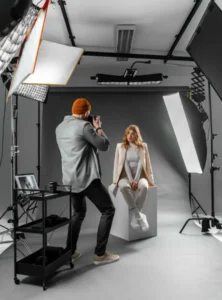 Good preparation can make the entire process much smoother. One of the first things to consider is the location. A studio is great for controlled lighting, while an outdoor shoot can feel more natural. The background should be simple so that nothing pulls attention away from the subject. A busy or cluttered background can make the image look less professional.
Good preparation can make the entire process much smoother. One of the first things to consider is the location. A studio is great for controlled lighting, while an outdoor shoot can feel more natural. The background should be simple so that nothing pulls attention away from the subject. A busy or cluttered background can make the image look less professional.
Grooming and appearance also play a big role. People should come to the shoot looking their best. Hair should be neat, and makeup should look natural. Overdoing makeup or using heavy products can make skin look unnatural in photos. For men, a clean shave or a neatly trimmed beard looks more polished. Using a little powder to reduce shine on the face can help as well.
Scheduling the shoot at the right time can quickly make a big difference in the results. People look better when they’re rested and not rushed, so mornings or early afternoons are often best. A calm session helps avoid tense expressions, and it’s easier than fixing tired eyes later in editing. Taking a bit more time to prepare makes the process smoother and improves the final headshot.
Foundation of a Great Headshot
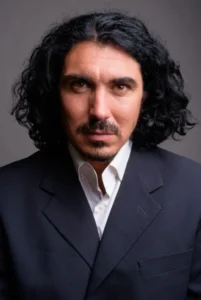 Lighting is one of the biggest factors in making a headshot look professional. Soft lighting is always better than harsh lighting because it creates a smoother, more even look on the skin. A large window with natural light works well, especially when the light is not too strong. If shooting indoors, using a softbox or reflector helps spread the light evenly across the face.
Lighting is one of the biggest factors in making a headshot look professional. Soft lighting is always better than harsh lighting because it creates a smoother, more even look on the skin. A large window with natural light works well, especially when the light is not too strong. If shooting indoors, using a softbox or reflector helps spread the light evenly across the face.
The placement of the light also matters. A light source positioned slightly above eye level works best because it highlights the face while adding just enough shadow for depth. If the light is too strong, placing a thin white cloth in front of it helps soften it. Shadows under the chin should be gentle, not too dark, as they can make the person look tired or aged.
For outdoor shoots, proper lighting can quickly make a big difference in a headshot. Direct sunlight can cause harsh shadows under the eyes and nose, while shooting in the shade or on a cloudy day gives softer, smoother results. If the sun is high, a reflector can help balance the light on the face. Good lighting not only improves professionalism but also improves the overall quality of the headshot.
Art of Framing
 The angle of a headshot can quickly make a big difference in how professional it looks. A straight-on angle shows strength and confidence, great for business photos. A slight head tilt or turn to the side creates a more natural and relaxed look. Since different angles suit different face shapes, trying small adjustments can improve the overall result.
The angle of a headshot can quickly make a big difference in how professional it looks. A straight-on angle shows strength and confidence, great for business photos. A slight head tilt or turn to the side creates a more natural and relaxed look. Since different angles suit different face shapes, trying small adjustments can improve the overall result.
Keeping the camera at eye level is usually the best option. A lower angle can make someone look too dominant, while a high angle might make them appear smaller or less confident. The eyes should always be the sharpest part of the image because they draw the most attention. If the focus is slightly off, the entire image loses its impact.
Composition also matters. Placing the subject slightly off-center instead of directly in the middle creates a more balanced look. Leaving a little space above the head and making sure the chin is not cropped too closely also helps. A clean background without distractions keeps the focus on the person rather than anything behind them. A well-composed shot helps create a professional and polished final image.
Choosing the Right Background
 The background plays a big role in how professional and clean the headshot looks. A messy or overly detailed background can take attention away from the person. A plain background, like a solid color or a simple outdoor setting, works best. Darker backgrounds create a stronger, more dramatic look, while lighter backgrounds feel more fresh and open.
The background plays a big role in how professional and clean the headshot looks. A messy or overly detailed background can take attention away from the person. A plain background, like a solid color or a simple outdoor setting, works best. Darker backgrounds create a stronger, more dramatic look, while lighter backgrounds feel more fresh and open.
Blurred backgrounds can help separate the person from their surroundings, making them stand out more. Using a wide aperture (like f/2.8 or f/4) can help create a nice background blur without losing sharpness on the face. This is useful for outdoor shoots where buildings, trees, or other elements might be distracting.
Choosing the right background can quickly make a big difference in a headshot. Light outfits work better with darker tones, while dark clothes stand out against lighter shades. Testing a few options during the shoot helps find the best match. A well-chosen background not only makes the subject pop but also adds to the overall feel of the photo. It should also reflect the person’s personality and the message the headshot is meant to show.
Editing for Perfection
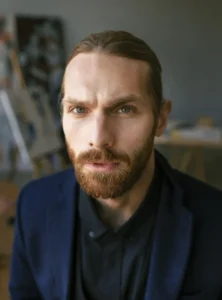 Editing is the final step in making a headshot look polished. The goal is to improve the image while keeping it natural. Brightness, contrast, and color adjustments can help refine the look, but too much editing can make the subject appear unnatural. The best approach is to make small, good improvements that don’t completely alter the person’s features.
Editing is the final step in making a headshot look polished. The goal is to improve the image while keeping it natural. Brightness, contrast, and color adjustments can help refine the look, but too much editing can make the subject appear unnatural. The best approach is to make small, good improvements that don’t completely alter the person’s features.
Removing small blemishes and softening minor wrinkles is fine, but keeping the skin’s natural texture is important. Over-smoothing can make a person look artificial. Adjusting skin tone slightly can help balance the colors, especially if the lighting caused any unevenness. Maintaining a natural look to make sure that the subject’s unique features and character shine through in the final image.
The background might also need some cleanup. If there are small distractions, like an object that shouldn’t be there, removing it can help the final image look cleaner. Adjusting sharpness slightly can also give a crisp, professional look without making the photo appear too edited. Proper editing improves the natural features of the subject while keeping the image professional and clean.
Final Touches
 Before sending the final image, do a last check to make sure everything looks right. The crop should be neat, with the subject positioned well in the frame. The colors should be balanced, and the image should be sharp without looking too processed. Taking an extra few minutes to review these small details can make a big difference in the final result.
Before sending the final image, do a last check to make sure everything looks right. The crop should be neat, with the subject positioned well in the frame. The colors should be balanced, and the image should be sharp without looking too processed. Taking an extra few minutes to review these small details can make a big difference in the final result.
The format of the final image matters too. A high-quality JPEG is usually the best choice for online profiles, while a PNG might be better for certain projects that require extra clarity.
Offering different sizes, such as a smaller version for social media and a larger one for printing, can be helpful. Asking if the person wants any final changes can quickly make a big difference in the result. Small tweaks like a warmer skin tone or slight lighting adjustment can improve the photo. These final touches leave a good impression and show attention to detail. A polished headshot helps people feel confident and ready for any professional setting, making all the effort worthwhile.
Read Next: Top Camera for Amazing Photography in 2025
